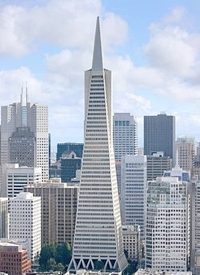
As January ushers in a new year, San Francisco will become the first U.S. city to instate a minimum wage rate of more than $10 an hour. Climbing from $9.92 to $10.24, the city’s new labor mandate will hike the city’s minimum wage more than $2 above the California minimum wage and nearly $3 more than the rate set by the federal government.
Many San Francisco workers lauded the move, particularly those residents working multiple jobs and being paid the city’s current minimum wage. "It’s a psychological boost," said David Frias, a 34-year-old movie theater usher and security guard for a crowd control firm. "It means that I’ll have more money in my wallet to pay my bills and money to spend in the city to help the economy."
Still, many city residents and community organizations say the new rate is too modest after factoring in rising inflation, cost of living increases, and San Francisco’s persistently stale economy. While Karl Kramer of the San Francisco Living Wage Coalition is happy to see that the city is raising the minimum wage, he says an adequate wage for a single, childless adult in San Francisco is $15 per hour, and double that when adding at least one child.
Conversely, San Francisco employers have protested the move, arguing that the law will increase layoffs by small businesses, particularly when employers are already burdened with city, state, and federal payroll taxes, along with a bundle of other city taxes. Any increase in expenses, critics note, will only further spike the city’s unemployment rate, which currently hovers just above nine percent.
Daniel Scherotter, owner of an upscale Italian restaurant called Palio D’Asti, says the 32-cent wage hike will formulate a wide disparity between his highest-paid employees — the waiters who make the bulk of their income from tips — and his salaried kitchen staff, whose wages will have to be reduced to offset the additional expenses. Scherotter said raising menu prices is out of the question, as the city’s paling economy has severely blighted his customer base and a price increase will only turn more customers away.
What most residents fail to realize, Scherotter maintained, is that San Francisco business owners fork out more than $1.50 an hour per employee for healthcare coverage if they do not provide health insurance. In addition, San Francisco is the only city in California which mandates a payroll tax of 1.5 percent, while employers are required to provide nine paid sick days annually per employee.
"So that drives me nuts, that as a chef, I have to cut my kitchen allowance," Scherotter told the Associate Press, adding that wage hikes and poor economic growth has already forced him to lay off eight workers in the last four years. "What I pay for a waiter is more than double what Manhattan pays, it’s more than double what Chicago pays, and it’s four times what Boston pays. And those are … other big, expensive, pro-labor cities. But I pay what they all pay added together for tipped employees."
"We hear that all the time," asserted Steve Falk, CEO of the San Francisco Chamber of Commerce. After combining all the taxes and mandates San Francisco employers must pay for their workers, Falk alleged, the payroll burden is up to 40 percent higher than other Bay Area cities. Falk offered examples of bidding contracts which have been lost to companies outside of San Francisco due to additional costs — including a high minimum wage rate — which outside businesses are not subjected to.
"You can’t on one hand as a city impose mandates and fees on a local business and then exclude them because their costs are too high when they go to bid on a city contract or a city service," Falk averred. "Fortunately, it’s a very attractive place to own a business and businesses thrive here because of the number of visitors… But we always worry: where’s the tipping point?"
A good deal of economists and compensation analysts consider the concept of "living wage" ordinances to be misleading because most cost of living indexes are not forward-looking, and they often discount the influence of rising productivity, efficiency wages, and worker bargaining power.
Moreover, the same critics believe the minimum wage, particularly when it exceeds market levels, incites market disruptions, as it breeds an unnatural market that flows artificially rather than economically. Employment levels fall as minimum wage rates increase; conversely, reduced minimum wage rates tend to maintain higher employment.
Writing for CNN Money in 2007, contributor Jeff Cox noted, "Increases in the minimum wage sometimes have been followed by dramatic spikes in the nation’s unemployment rate, as was the case in the early 1980s." President Jimmy Carter raised the federal minimum wage from $2.30 to $3.35 an hour in 1981, and what followed was an unemployment rate reaching its highest point since the Great Depression; by January 1983, national unemployment hit 10.4 percent.
Summing up the argument, Falk offered the following question: "Are we better off with more jobs, or fewer jobs than pay more?"
Photo: San Francisco’s Transamerica Pyramid



